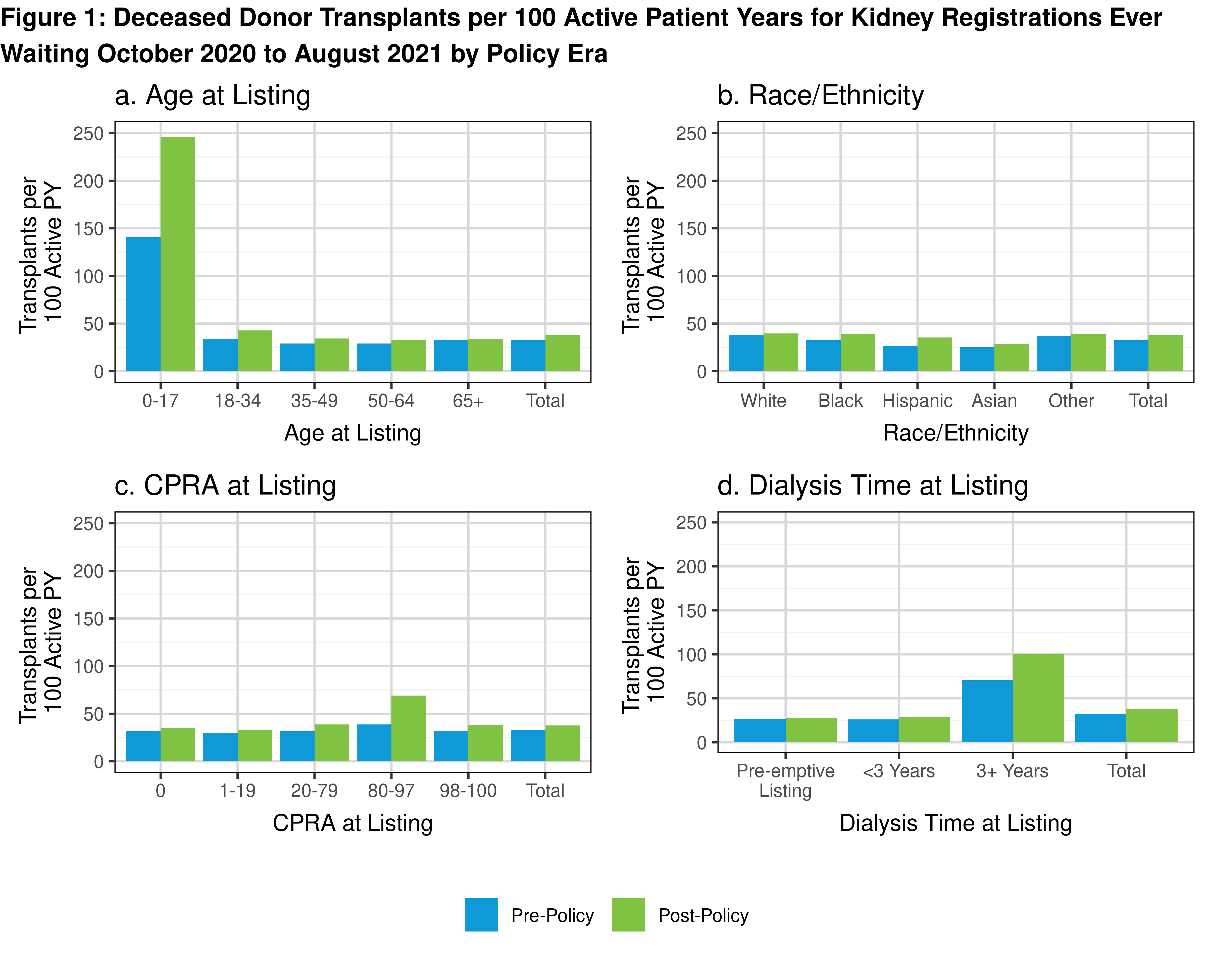Transplant Rates Increased with Broader Distribution of Deceased Donor Kidneys
1UNOS, Richmond, VA, 2Surgery, Keck Medicine of USC, Los Angeles, CA, 3Carolinas Medical Center, Charlotte, NC, 4Dell Seton Medical Center at The University of Texas, Austin, TX, 5Beth Israel Deaconess Med Ctr, Boston, MA
Meeting: 2022 American Transplant Congress
Abstract number: 6
Keywords: Allocation, Kidney
Topic: Clinical Science » Kidney » 31 - Kidney Deceased Donor Allocation
Session Information
Session Name: Kidney Deceased Donor Allocation
Session Type: Rapid Fire Oral Abstract
Date: Sunday, June 5, 2022
Session Time: 3:30pm-5:00pm
 Presentation Time: 3:40pm-3:50pm
Presentation Time: 3:40pm-3:50pm
Location: Hynes Ballroom C
*Purpose: The OPTN Kidney Transplantation Committee implemented a policy removing donation service area (DSA) and OPTN region from kidney allocation on 3/15/2021. In addition to allocating kidneys using a 250 nautical mile circle around the donor hospital to allocate kidneys more broadly, the policy increased priority for pediatric candidates.
*Methods: We queried the OPTN database for all deceased donor kidney transplants and registrations ever waiting from 10/2020-8/2021. We calculated transplant rates, defined as transplants per 100 active patient years (PY), before and after policy implementation. The pre-policy cohort was 10/1/2020-3/14/2021 and the post-policy cohort 3/15/2021-8/31/2021.
*Results: The overall transplant rate increased from 32.6 [95% CI: 31.9, 33.3] to 37.7 [36.9, 38.4] transplants per 100 active PY after policy implementation. Correspondingly, the transplant rate increased for several subpopulations, including: pediatrics (140.6 [124.3, 158.5] to 246.1 [222.3, 271.8]), Black (32.4 [31.2, 33.7] to 39.1 [37.7, 40.4]), Hispanic (26.5 [25.2, 27.9] to 35.4 [33.8, 37.0]), CPRA 80-97% (38.8 [35.2, 42.6] to 69.0 [64.1, 74.2]), CPRA 98-100% (32.2 [28.7, 36.0] to 38.2 [34.5, 42.3]), and 3+ years of dialysis time at listing (70.6 [65.9, 75.5] to 99.9 [93.8, 106.4]) registrations.
*Conclusions: In alignment with the SRTR KPSAM results used to inform policy development, transplants rates increased for pediatric, Black, Hispanic, and sensitized patients, as well as candidates with long dialysis times after the removal of DSA and OPTN region from kidney allocation. The OPTN will continue to monitor the impact of this policy.
To cite this abstract in AMA style:
Robinson A, Gauntt K, Wilk A, Kim J, Casingal V, Turgeon N, Pavlakis M. Transplant Rates Increased with Broader Distribution of Deceased Donor Kidneys [abstract]. Am J Transplant. 2022; 22 (suppl 3). https://atcmeetingabstracts.com/abstract/transplant-rates-increased-with-broader-distribution-of-deceased-donor-kidneys/. Accessed January 7, 2026.« Back to 2022 American Transplant Congress

